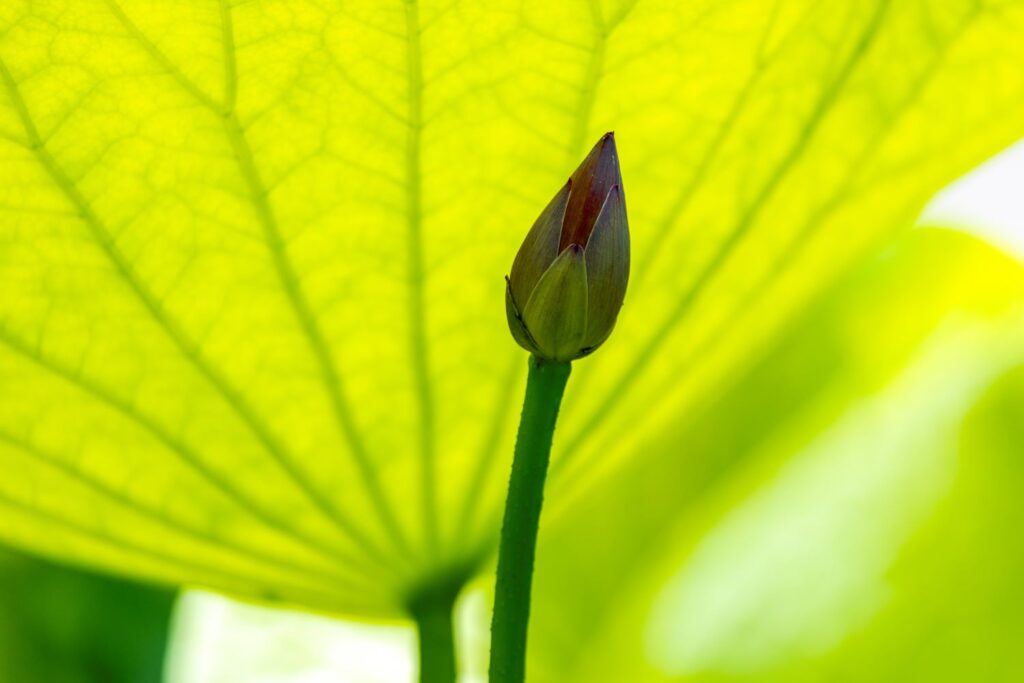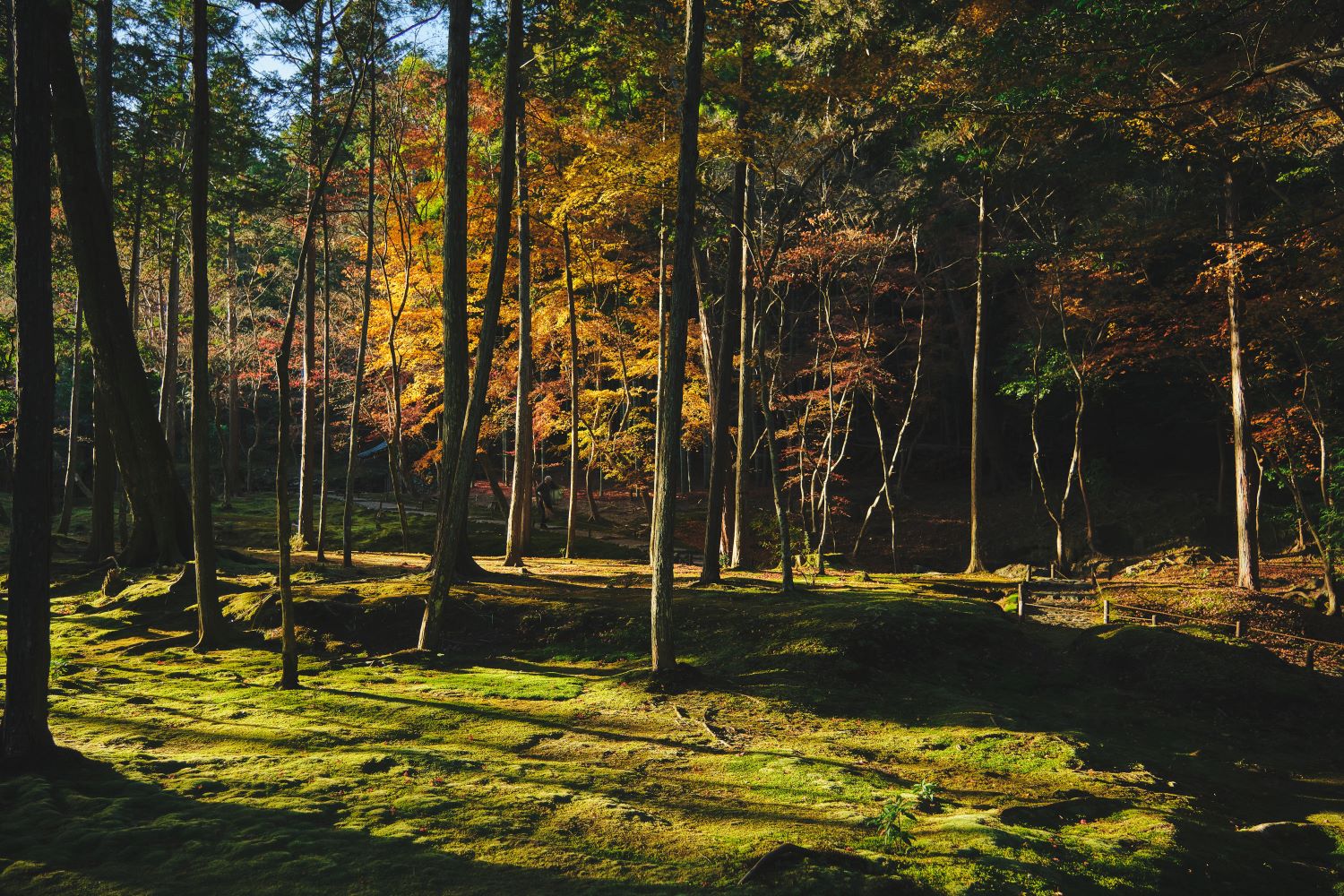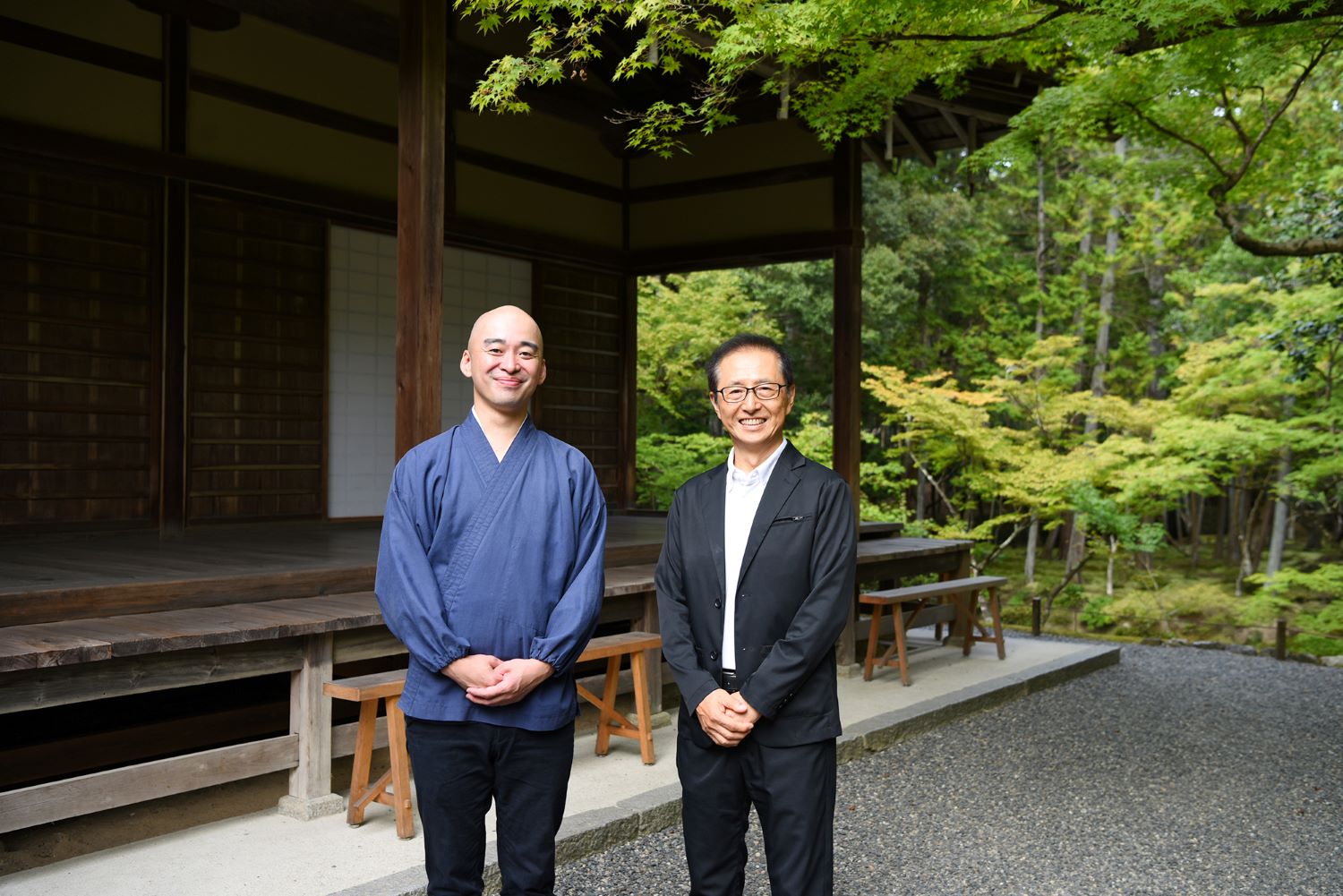2024.3.11
Five Seasons of Scenic Beauty Chapter 1
Nakata Akira / Photographer
In most of the world there are four seasons, but here at Saihoji Temple, we count the rainy season as a separate season, so we have five seasons. Over the course of over one hundred visits, photographer Nakata Akira has captured the beauty of these five seasons at Saihoji. We hope you will enjoy the distinctively “Saihoji” moments immortalized in his work.
Cherry Blossoms
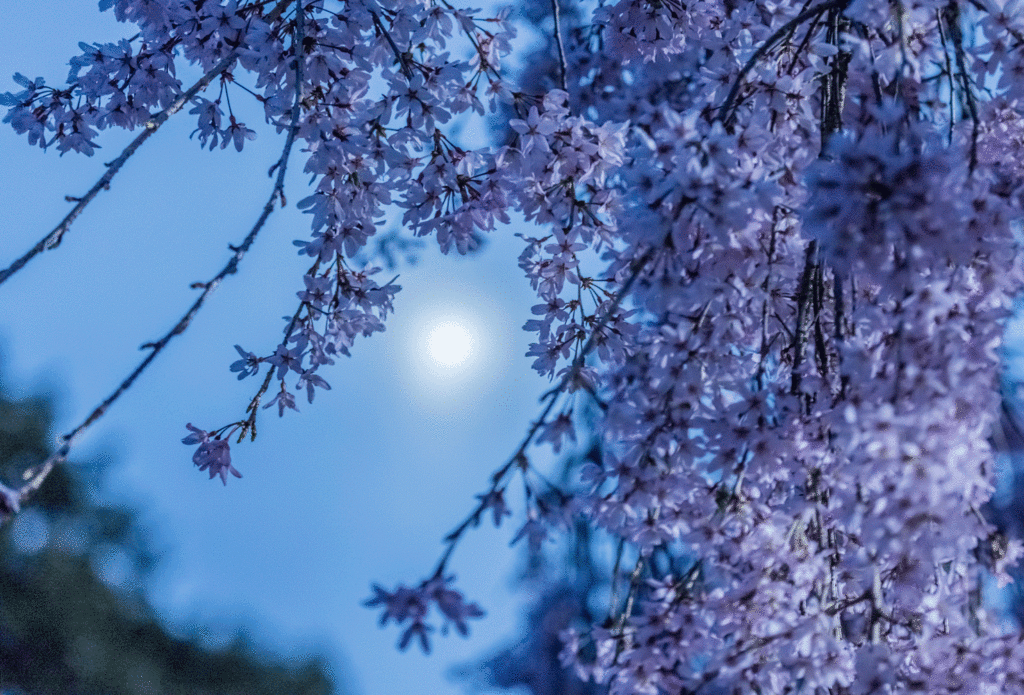
@Nakata Akira
“Saihoji used to be famous for its cherry blossoms."
What kind of landscape of Saihoji can you imagine from such a word? The experience of visitors being soothed by the green moss and the tranquility of the temple is hard to find elsewhere, and the picture of “Saihoji = moss temple” may have been formed after all.
The weeping cherry tree planted on the south side of the main hall (Sairai-do), which was rebuilt in 1969, is in full bloom in late March. Cherry blossoms illuminated by moonlight are exceptionally beautiful and make us feel the transience of their beauty.
When Saihoji garden was created in the mid-14th century, it was not covered in moss as we see it today, but had white sand on the islands of the main pond called Ogonchi(The Golden Pond), pine trees, scenic stones and buildings called Ruri-den and Sairai-do standing by the pond, connected by a corridor. The garden had an elegant and social aspect, with cherry blossoms in full bloom in spring and the emperor, shoguns and their entourages invited for cherry blossoms viewing and boat rides. A Zen priest and creator of Saihoji garden, Muso Kokushi, left so many Japanese poems about cherry blossoms that we can see how much he was crazy about them.
Not only him, but Japanese people love cherry blossoms. This is probably because we are attracted by the beauty of the cherry blossoms, which bloom all at once in the brightening season after winter, and by the sense of ‘transience’ as they fall without stopping. When the capital was first relocated to Kyoto, plum trees were favored as they were of foreign origin, but in the mid-10th to 11th century, cherry trees, which resonate with the Japanese mind, came to be loved. Cherry trees have something in common with the Zen sense of ‘transience’ and its aesthetics, and they are also planted in strolling pond gardens and dry landscape gardens.
I don’t think I’m the only one who feels the Buddhist teaching of ‘the impermanence of worldly things’ in the moss world of Saihoji, which has been created by the forces of nature and the historical background of the time of its rise and fall since days of the elegant landscapes were seen. Starting with cherry blossoms, I would like to talk about the charms of the *five seasons at Saihoji over the next year by using seasonal words as keywords.
*In Saihoji, the rainy season, when the garden is most moist, is added to the four seasons (spring, summer, fall and winter) and called the five seasons.
Nakata Akira
Born 1951 in Kyoto.
A member of the Japan Professional Photographers Society (J.P.S). He is a famous photographer of landscapes, gardens and festivals on the theme of “Kyoto culture”, and has published several books.
His main publications are
“SAIHOJI SHIN JYUKKYO” (Saihokai Association),
“Going through the Tale of Genji”, “Kyoto’s Festival Calendar” (Shogakukan),
“KYOTO IMPERIAL PALACE, OMIYA / SENTO IMPERIAL PALACE”,
“KATSURA IMPERIAL VILLA / SHUGAKUIN IMPERIAL VILLA”,
“Kyoto Gion Festival”,
“Kyo Shun Kan” (Kyoto Shimbun Publishing Center),“Japanese Gardens: Kyoto” (PIE INTERNATIONAL), and more
* Unauthorized quotation or reproduction of the text and photographs in this article is strictly prohibited.
Up next
Most read
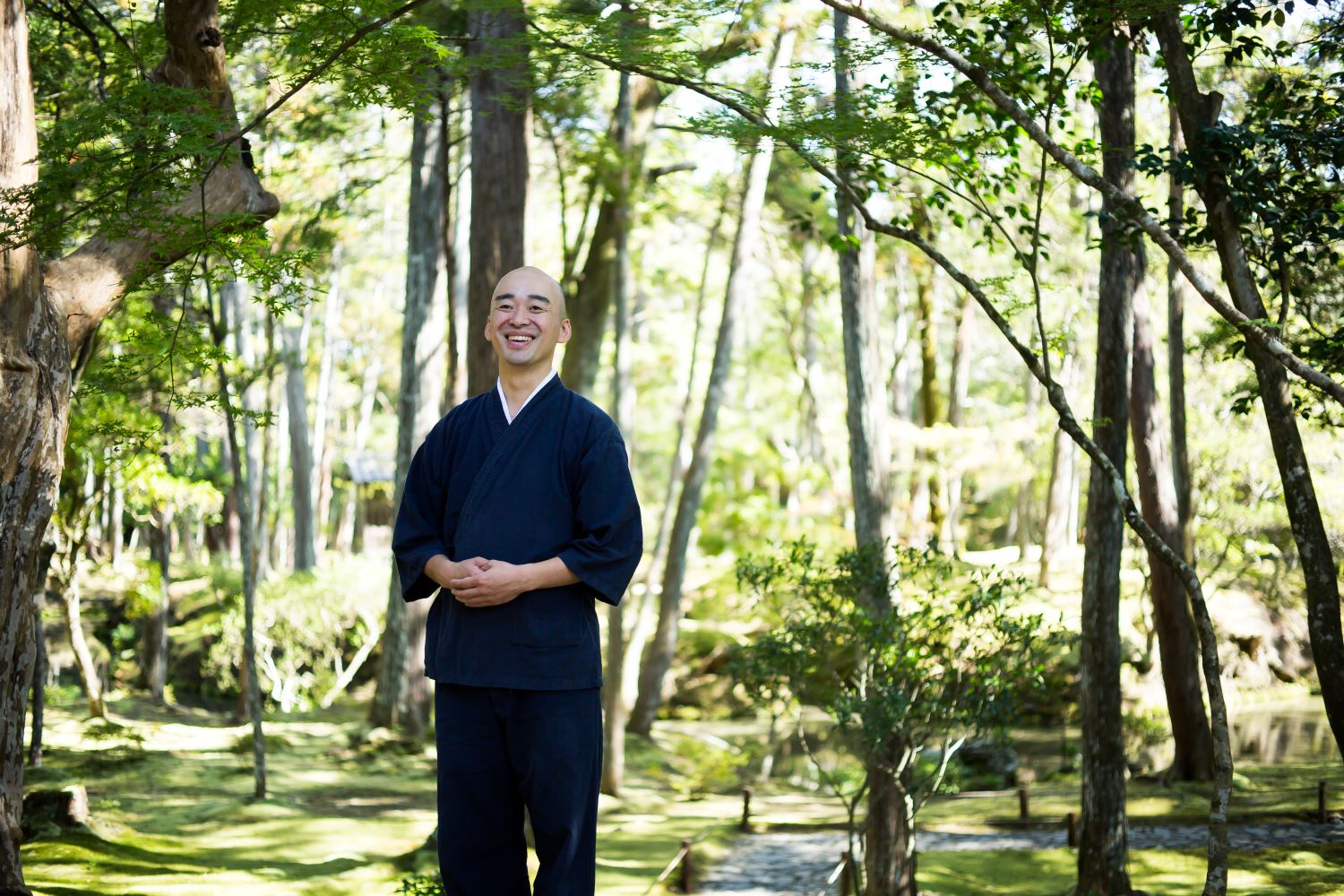
Your Heart
"What is happiness?"


